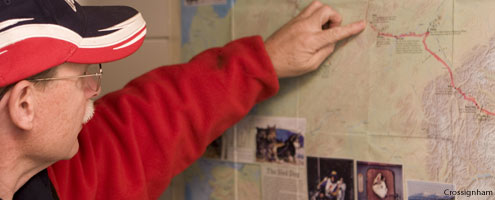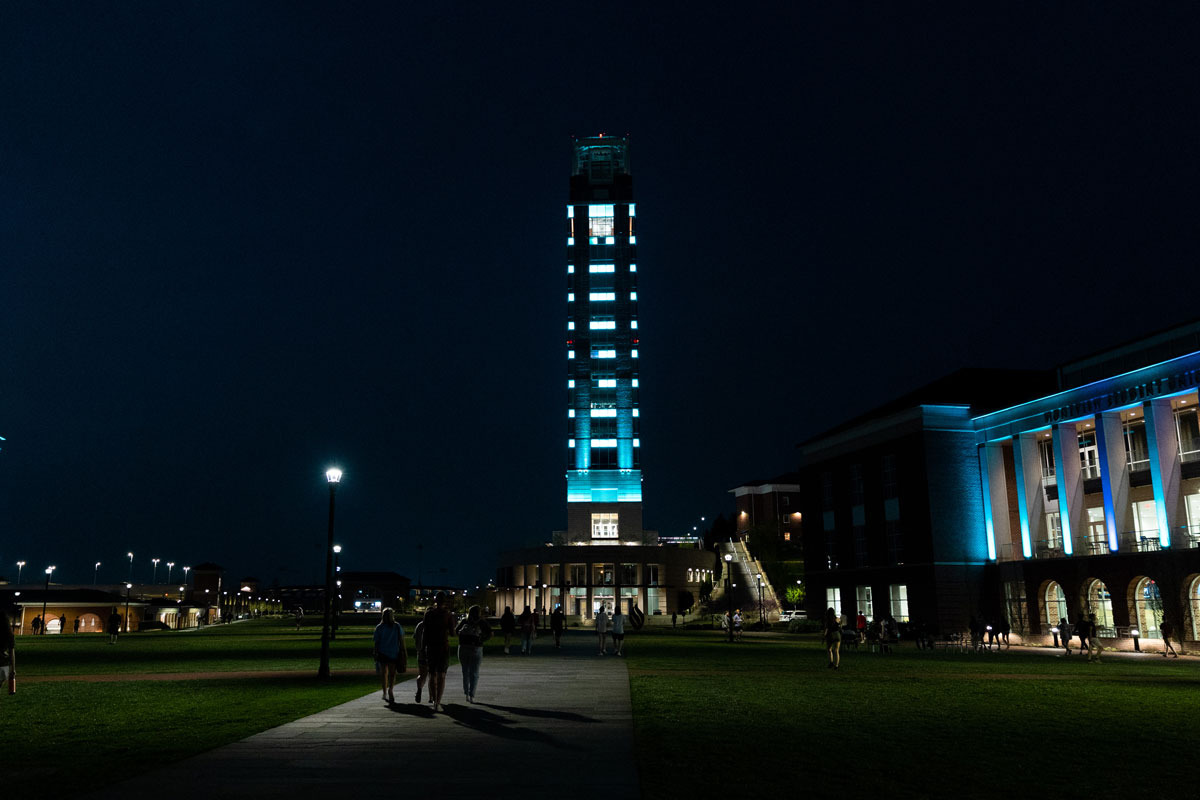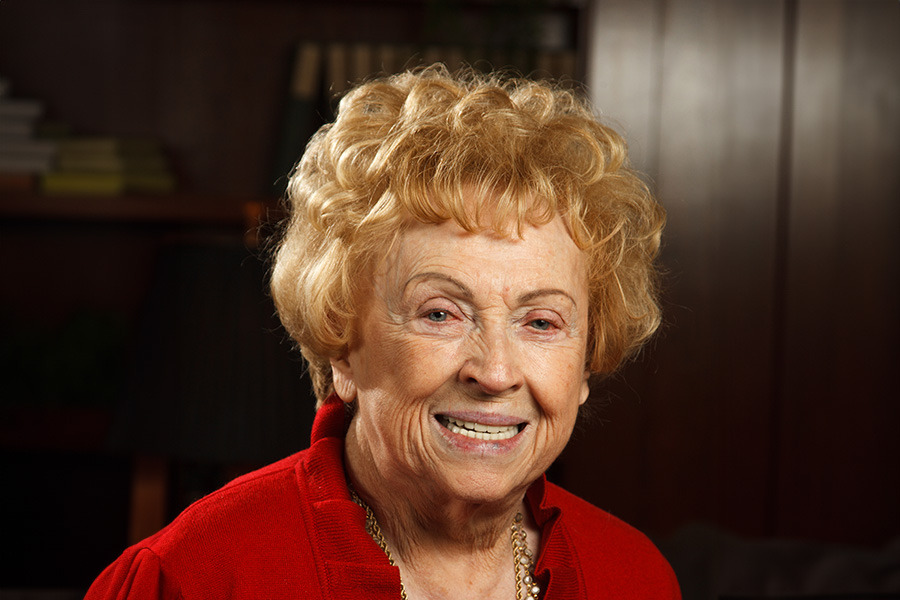Search News Archives
Filter News Articles
Additional Navigation
Cold courage: LU professor on path to Alaska’s great race
December 20, 2007 : By Tara Maxwell

What compels a man to endure a grueling 1,159-mile trek across ice and snow in the wilds of Alaska, entrusting his life to a team of dogs and his survival skills, all for a relatively small reward and the promise of hardship?
For Army Master Sergeant and Liberty University Distance Learning Professor Rodney Whaley, the answer is both complex and simple. His drive in entering the Iditarod Trail Dog Sled Race is closely tied to his childhood in Alaska, his decades of service to his country and his love of adventure.
Entering Iditarod veteran Al Hardman’s musher camp, Alcan Kennels, on Michigan’s Upper-Peninsula, is like stepping into another world.
Snuggled between Lake Michigan and Lake Superior, the chilly air is filled with wood smoke and the deep howls and sharp barks of dogs ready to run. Accommodations are rustic yet comfortable and the main cabin has a battery generator for power.
Outside the cabin, a shiny row of metal pans used to feed the 37 dogs in the dog lot dry after the morning rations while a group of colorful, well-used dog sleds, some on wheels, hang from the rafters of a nearby open-sided shed.
Although snow has fallen, it has not yet begun to accumulate in early November and the dogs are being run with 4-wheelers. It will take at least a foot of snowfall to allow the dog sleds to be used and eventually there will be nearly four feet of powder on the ground through spring.
Whaley left his home in Franklin, Tenn., to train at the musher’s camp (mushing is dog sledding) in early October. He is the first Tennessean to ever enter the Iditarod.
Joining Whaley and Hardman at the camp are dog handler Danielle DeBruyne, who has a master’s in ecology, and Private First Class National Guardsman Matthew Cheek. Cheek’s active duty assignment is to assist Whaley in the care and training of the dogs.
The Army National Guard is sponsoring Whaley’s participation in the 2008 Iditarod by covering the cost of transportation to Alaska, food for the dogs and lodging. Liberty University is also one of Whaley’s sponsors.
“I will be using the skills I’ve developed for the past 24 years in the Army National Guard,” 55-year-old Whaley said. “The Iditarod is the ultimate experience and my lifelong dream.”
Although Hardman never planned to be a dog musher, his road to the Iditarod began with two puppies.
“I started off with two little Samoyeds I got in 1990 and then they liked to pull and I got them to pull the toboggan and give the kids a ride. My employees got them a sled and my wife has cursed them every since,” Hardman said.
Hardman flew to Alaska as an Iditarod spectator in the early 90s and later purchased the musher’s camp in Michigan near the rural hamlet of McMillan. Now in his 60s, Hardman is planning to run his fifth Iditarod in March.
“I don’t know what it is. It’s got to be the challenge I guess,” Hardman said. “It’s just you do it and then you make a lot of mistakes and think ‘I’m never going to do this again.’ I remember getting to Nome and thinking, ‘I’m never going to do this again.’ I told my buddy this is the last time.”
The terrain of the “Last Great Race on Earth” includes jagged mountain ranges, frozen rivers, dense woodlands, tundra and coastlines with temperatures normally below zero. From Anchorage, in south central Alaska, to Nome on the western Bering Sea coast, the race route is alternated every other year, one year going north through Cripple, Ruby and Galena, the next year south through Iditarod, Shageluk and Anvik. Each team of 12 to 16 dogs will travel at a trot of about 8 miles per hour to complete the race in about two weeks.
Ninety-five mushers have signed up to run the 2008 Iditarod, which begins on March 1.
“Some days you wish you weren’t alive and other days the scenery is beautiful and you think, ‘Wow the team is going good,’” said Hardman, who has finished as high as 21st place.
The dogs at the musher’s camp come in an array of colors, including tan, white, black, yellow and multi-color and weigh around 45 pounds. They are known as Alaskan Huskies, or mutts, as Whaley calls them. Their names range from Sackett and Whiskey to Soap Here and Spelling Bee.
“When you think of sled dogs, you typically think of the Siberian Husky, which was my first love. Over the years they started mix-breed dogs and they just call them Alaskan Huskies now … They are extremely excitable dogs. They are not trained to sit down and stay, they are trained to run, run, run. Gee haw. They live to run,” Whaley said.
Most dogs running the Iditarod are 4 or 5 years old, but there have been cases of 10-and 11-year-old dogs participating. They will run 40 to 50 miles without stopping and sleep on straw while still hooked into their harnesses on the line.
The dogs wear booties in the snow to protect their paws from fissures caused by impacted ice and snow and veterinarians run complete check-ups on every dog at check-points during the race. If a dog is found unfit to run they are flown back by plane.
Whaley was first introduced to dog sledding when he was 6 years old. Originally from eastern North Carolina, Whaley’s family moved to Anchorage in 1958, when Alaska was still a territory and the rough, unpaved Alaskan Highway took more than a month to traverse.
In Anchorage, there was a winter festival called the Fur Rendezvous, which included three days of sled dog races called The World Championship Sled Dog Races. It was at the festival that Whaley got a glimpse of the sport he would later come to love.
“For three years I kept asking for a husky, but we lived in a two-room house and finally after a lot of persistence my parents got me one,” Whaley said of his first husky. “By the time I was in fourth grade, when I was 10 years old, I raced my first race in the one-dog class, went a half mile and won a couple trophies.”
Each year Whaley added more dogs to compete in longer races. He came in second place in the Junior Fur Rendezvous, to the son of Joe Redington who is co-founder of the Iditarod.
Whaley continued to participate in dog sled races until junior high when his family moved back to North Carolina because his mother became ill. The family brought Stormy, one of their huskies, with them. Although Whaley wasn’t dog sled racing in high school, he continued to follow the races into his teenage years.
In 1970, Whaley graduated high school and in 1973 the Iditarod Trail Dog Sled Race was born to commemorate the diphtheria serum run of 1925 in Nome.
Although Whaley wanted to join the military after finishing high school, his mother wanted him to attend a Bible college, so he enrolled in Free Will Bible Baptist College in Nashville where he would later meet his wife, Vicki, and eventually become part of the faculty.
Whaley earned a master’s degree in music and played the trumpet and French horn. Still interested in joining the military, Whaley learned the National Guard had a band.
“I talked to the commander and found out I could enlist in the band and go to basic training during the summer. The more I performed duty, the more I really enjoyed it. After I was in the Guard, when I was teaching, I would do different types of duty in the summer. I really enjoyed the military experience.” During Desert Storm, Whaley was in the Army band and was called to duty.
During that time his wife and children began to attend a Southern Baptist church. Whaley then transitioned from a ministry role to a role in the military. He took a job as a readiness non-commissioned officer and has had several different assignments since then, including troop commander, recruiter and as part of the inspector general’s office.
Whaley continued to follow dog sledding and the Iditarod, and a trip to Washington State convinced him to get back in the game.
“My wife is a big dog lover from Washington State and we went to visit her mother and went snowmobiling and stayed in a cottage. We went mushing on two sleds with a team,” Whaley said. “We got two little huskies and I took them out jogging and then with a harness and hooked them up to a little cart. Then I started going mushing every winter in British Columbia and Washington and took them with me and found races to enter.”
In 2004, Whaley went to the Iditarod as a dog handler for four-time Iditarod musher Hardman. Hardman and Whaley became friends and are now training together in Michigan for the upcoming race.
No stranger to physical challenges, Whaley, who says he “has always liked extreme things,” ran 14 marathons after turning 40. He even ran the Blue Angel Marathon in Florida on his 50th birthday.
Whaley, whose brother Dr. Vernon Whaley is the director of Liberty’s Center for Worship, is teaching a 400 level religion class through Distance Learning and is a Liberty Seminary student.
“My goal is to retire from the military and have my doctorate at the same time in the next couple years and then hope and pray for a ministry opportunity,” Whaley said.
Whaley, who teaches Sunday School in Tennessee, brings his dog Maverick to be a teaching assistant. He has also officiated high school football for more than 20 years and speaks to school groups about mushing and the Iditarod.
“There’s a lot of camaraderie, but there’s not many people that do [mushing]. The big camaraderie is between a musher and his dogs. You really got to love them.”
Whaley’s training in Michigan will continue until January, when he must complete two sanctioned qualifying races totaling 500 miles. Whaley plans to enter a race in Michigan and one in Minnesota. After qualifying, Whaley will head to Alaska in mid-February.
Visit Whaley’s website at http://www.tndogmusher.com/home.html. For the Iditarod: http://www.iditarod.com/.


